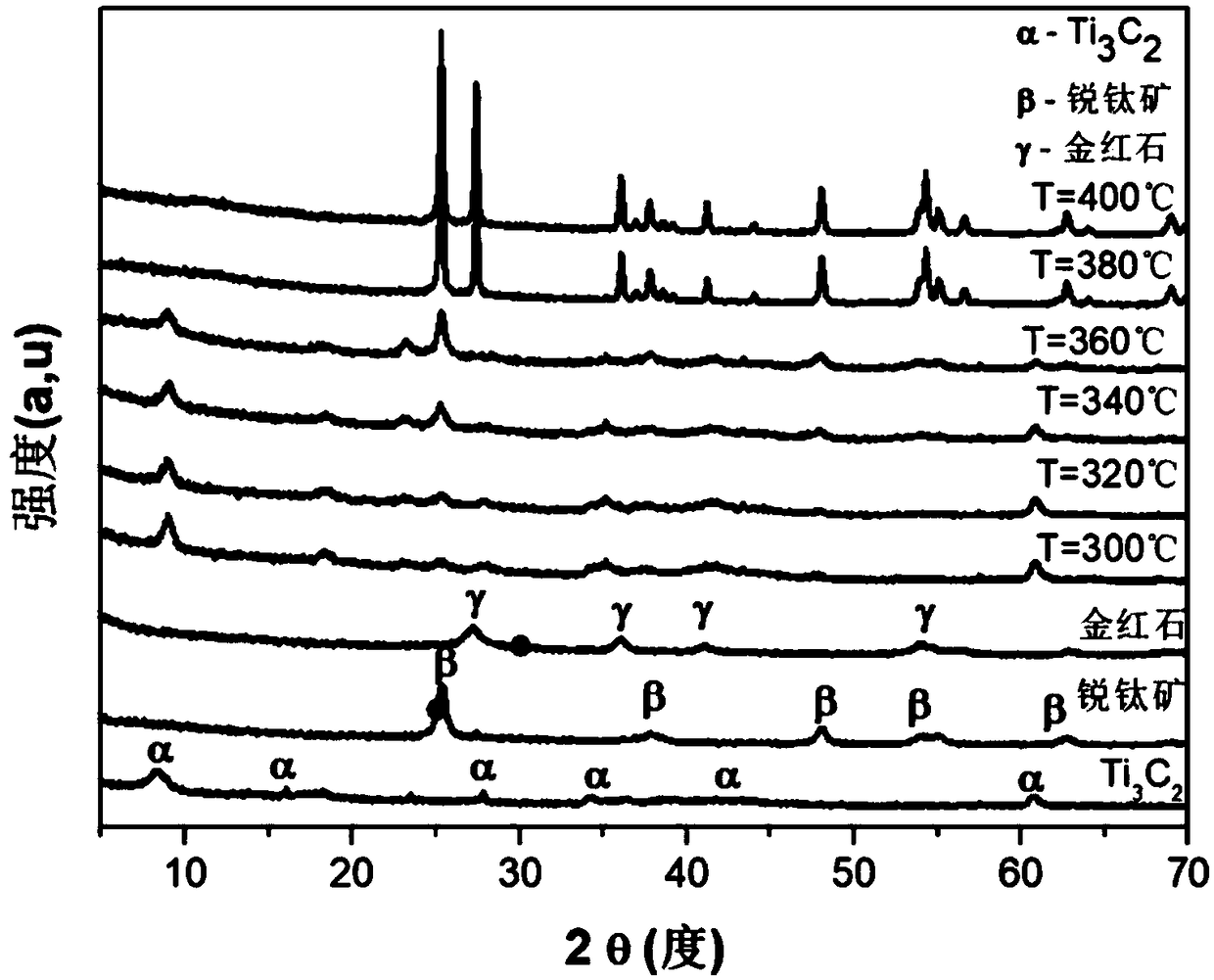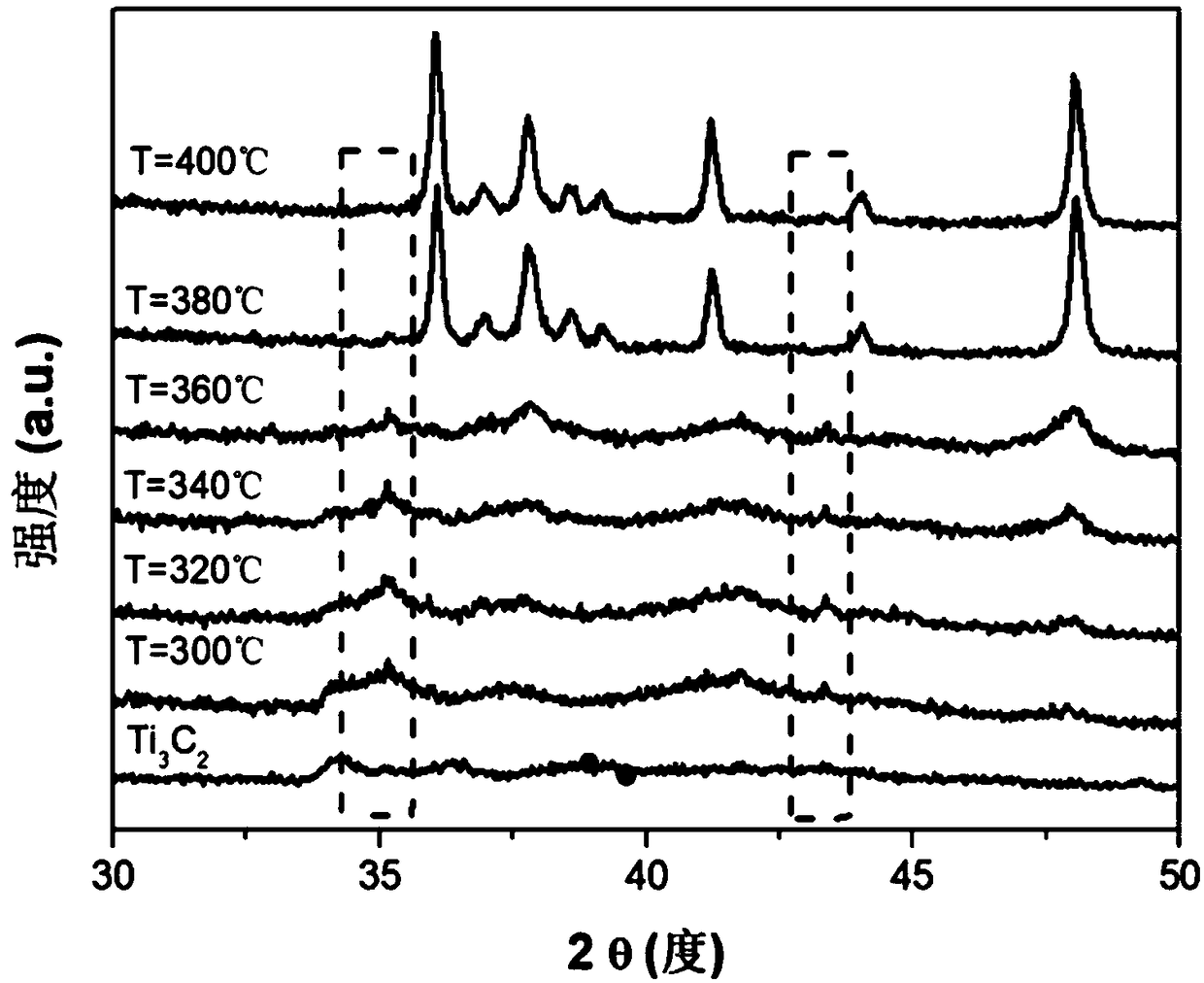Method and product of in-situ synthetic TiO2@Ti3C2 by using dimethylsulfoxide intercalated and layered Ti3C2
A technology of in-situ synthesis of dimethyl sulfoxide, applied in the field of preparation of Ti3C2, can solve the problems of poor catalytic performance, achieve the effect of increasing interlayer spacing, improving purity and crystallinity, and facilitating catalytic degradation
- Summary
- Abstract
- Description
- Claims
- Application Information
AI Technical Summary
Problems solved by technology
Method used
Image
Examples
Embodiment 1
[0047] 1) 15g Ti 3 AlC 2 -MAX phase ceramic powder was slowly added to 300mL HF solution with a mass concentration of 49%, and reacted for 36h under the condition of an oil bath at 50°C in a magnetic stirrer;
[0048] 2) After the reaction, the obtained solution was centrifuged at 3000 rpm for 5 minutes, the supernatant was poured out, and the precipitate was washed with deionized water, shaken and then centrifuged under the same conditions, repeated 6 times. The pH of the final supernatant was measured to be between 5 and 6, and then the precipitate was washed with absolute ethanol, centrifuged after shaking, and kept at the same speed and centrifugation time, repeated twice, and after centrifugation, the resulting solution was suction filtered to obtain a precipitate, and the The resulting precipitate was vacuum dried at 60°C for 24 hours to obtain Mxene-Ti 3 C 2 Material;
[0049] 3) the Mxene-Ti obtained in step 2) 3 C 2 The material and dimethyl sulfoxide were mixed...
Embodiment 2
[0053] The preparation process refers to the process in Example 1. The difference is that the final temperature maintained in step 5) is 320° C. for 1 hour. After the program ends, natural cooling is adopted. When the temperature drops to room temperature, the sample is taken out to obtain TiO 2 @Ti 3 C 2 Material.
Embodiment 3
[0055] The preparation process refers to the process in Example 1. The difference is that the final temperature maintained in step 5) is 340 ° C for 1 h. After the program ends, natural cooling is adopted. When the temperature drops to room temperature, the sample is taken out to obtain TiO 2 @Ti 3 C 2 Material.
PUM
 Login to View More
Login to View More Abstract
Description
Claims
Application Information
 Login to View More
Login to View More - R&D Engineer
- R&D Manager
- IP Professional
- Industry Leading Data Capabilities
- Powerful AI technology
- Patent DNA Extraction
Browse by: Latest US Patents, China's latest patents, Technical Efficacy Thesaurus, Application Domain, Technology Topic, Popular Technical Reports.
© 2024 PatSnap. All rights reserved.Legal|Privacy policy|Modern Slavery Act Transparency Statement|Sitemap|About US| Contact US: help@patsnap.com










